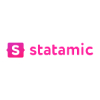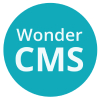8 Top Flat-File CMS to Build Your Website Quickly
Flat file CMSs are a popular alternative to traditional CMS platforms, providing a lightweight and fast-loading solution for managing website content. Rather than relying on a database to store content, these CMSs use text files, which makes them easier to set up, more secure, and less resource-intensive. In this list, we will explore some of the top flat file CMS options available, each with their own unique features and benefits. Whether you are a developer looking for a simple and efficient CMS solution or a content creator in need of a user-friendly platform to manage your website, this list has something to offer.

Kirby is the content management system that adapts to any project. Made for developers, designers, creators and clients.
Visit website➔
Grav is a Modern, Crazy Fast, Ridiculously Easy and Amazingly Powerful Flat-File CMS.
Visit website➔
HTMLy is an open source databaseless PHP blogging platform. A flat-file CMS that allows you to create a fast, secure, and powerful website or blog in seconds.
Visit website➔
Monstra is a modern and lightweight Content Management System. It is Easy to install, upgrade and use.
Visit website➔
Pico is a flat file CMS, this means there is no administration backend and database to deal with. You simply create .md files in the 'content' folder and that becomes a page.
Visit website➔
Publii is the perfect tool for creating beautiful, fast, and secure websites. With its friendly user interface, you'll be able to create SEO and privacy-friendly websites in no time at all.
Visit website➔
Learn why Statamic is the best Flat File CMS for most people. Bring fully dynamic websites and applications to life with nothing but YAML Front-Loaded Markdown files and HTML. Enjoy a beautiful, modern control panel anyone can use.
Visit website➔
WonderCMS is the smallest flat file CMS. Free, fast & easy editing, only 5 files.
Visit website➔Good to know...
What is a Flat File CMS?
A flat file CMS is a type of content management system that uses text files, rather than a database, to store content. Each page of content is stored as a separate file, making it easy to organize and manage content without the need for a database. This type of CMS is often used for small to medium-sized websites, blogs, or portfolios. Unlike traditional CMS platforms that require a database and can be resource-intensive, flat file CMSs are lightweight and fast-loading. They also tend to be more secure, as there is no database that can be compromised. However, flat file CMSs may not be as flexible or scalable as traditional CMS platforms, and may require some technical expertise to set up and manage.
What are the benefits of a flat file CMS?
Here are some benefits of using a flat file CMS:
- Lightweight and fast: Flat file CMSs are lightweight and fast-loading compared to traditional CMS platforms that require a database. This makes them an ideal choice for small to medium-sized websites, portfolios, or blogs.
- More secure: As flat file CMSs do not require a database, they are generally more secure than traditional CMS platforms. There is no risk of a database being compromised, which can help protect sensitive user data.
- Easy to set up and manage: Flat file CMSs are typically easier to set up and manage than traditional CMS platforms. There is no need to set up a database or deal with complex configurations. Content can be organized and managed using simple file structures, which can be easily edited or moved.
- Flexible and customizable: While flat file CMSs may not be as feature-rich as traditional CMS platforms, they are often highly flexible and customizable. Developers can create custom themes, plugins, and extensions to suit their needs.
- Portable: Flat file CMSs are highly portable, as content is stored in text files that can be easily moved from one server to another. This can be especially useful for website owners who need to switch hosting providers or migrate their website to a new platform.
Overall, flat file CMSs offer a number of benefits for website owners and developers, including speed, security, simplicity, and flexibility. They may not be suitable for larger or more complex websites, but for small to medium-sized projects, they can be an excellent choice.
What types of websites are best suited for a flat file CMS, and are there any limitations to using this type of platform?
Flat file CMS platforms can be a good fit for a wide range of websites, but they are particularly well-suited for certain types of sites. Here are some examples:
- Small websites with simple content: Flat file CMS platforms are ideal for small websites that don't have a lot of content or complex functionality. They are simple to set up and can be used to create a basic website quickly and easily.
- Static websites: Since flat file CMS platforms don't require a database, they are well-suited for creating static websites. Static websites are simple and fast to load, making them a good choice for websites that don't require a lot of dynamic content.
- Websites with limited resources: Flat file CMS platforms are lightweight and don't require a lot of resources to run, which makes them a good choice for websites hosted on low-cost servers or with limited bandwidth.
- Websites that don't require frequent updates: Since flat file CMS platforms don't have a database, they can be more difficult to update than traditional CMS platforms. Therefore, they are a good choice for websites that don't require frequent updates, such as portfolio websites or simple blogs.
While flat file CMS platforms offer many benefits, there are also some limitations to consider. For example:
- Limited functionality: Flat file CMS platforms may not offer the same level of functionality as traditional CMS platforms. They are typically limited to basic content management and may not have features such as user management or e-commerce functionality.
- Limited scalability: Flat file CMS platforms may not be well-suited for larger websites with more complex content and functionality. They may also not be able to handle high traffic volumes.
- Limited development community: Flat file CMS platforms may not have as large of a development community as traditional CMS platforms, which means that there may be fewer resources available for customization and troubleshooting.
Overall, flat file CMS platforms can be a good choice for certain types of websites, but it's important to carefully consider their limitations and whether they are the best fit for your particular needs.
Can flat file CMS platforms be integrated with other tools and platforms, such as social media or e-commerce platforms?
Flat file CMS platforms can be integrated with other tools and platforms, including social media and e-commerce platforms, to some extent. However, the level of integration will depend on the specific CMS platform and the tools or platforms being integrated.
For example, some flat file CMS platforms may have built-in support for integrating with social media platforms, such as Facebook or Twitter, by providing social media sharing buttons or feeds. Other platforms may require additional plugins or custom coding to achieve this integration.
Similarly, some flat file CMS platforms may have built-in support for integrating with e-commerce platforms, such as Shopify or WooCommerce, by providing product catalogs and checkout features. Again, other platforms may require additional plugins or custom coding to achieve this integration.
It's important to note that while some level of integration may be possible, flat file CMS platforms may not offer the same level of integration and flexibility as traditional CMS platforms. Users may need to have some technical knowledge or seek assistance from a developer to achieve the desired integration.
Can a flat file CMS handle user management and authentication?
Flat file CMS platforms typically do not have built-in support for user management and authentication. Since flat file CMS platforms do not use databases, there is no central location to store user information, such as usernames, passwords, and other user-specific data.
However, some flat file CMS platforms may provide some level of user management and authentication through third-party plugins or custom coding. For example, a developer could build a custom authentication system that uses encrypted cookies or sessions to authenticate users across different pages of the website. This authentication system could be used to control access to certain pages or features of the website.
It's important to note that implementing user management and authentication in a flat file CMS platform can be complex and may require some technical expertise. Additionally, it may not provide the same level of security or functionality as traditional CMS platforms, which have dedicated user management and authentication systems built-in.